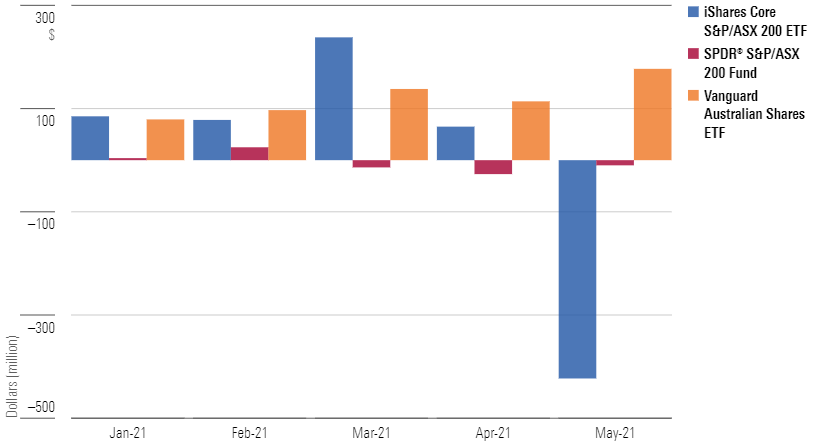Morningstar runs the numbers
We take a numerical look through this week's Morningstar research. Plus, our most popular articles and videos for the week ended 25 June.
Mentioned: iShares Core S&P/ASX 200 ETF (IOZ)
$100 to $2000
Morningstar's James Gard compares gold and cryptocurrency looking at inflation protection, usefulness, scarcity and most notably, volatility, writing: "Looking back over the last 50 years, gold has traded between $100 and $2,000. That sort of increase is decent over the long-term but isn’t going to make you an overnight millionaire. In the past six years, Bitcoin has traded between $300 and its recent peak of $60,000 in April, and since then it’s fallen sharply."
0.7%
With no national policy on electric vehicles, Australia is lagging the world in their adoption, writes Angus Hewitt in a note on the ESG risks for automotive spare part providers: “Many countries have set targets to phase-out internal combustion cars. The UK is planning to sell no more gasoline-powered cars or vans by 2030. But with no discernible national EV policy, the uptake in Australia trails most OECD countries. In calendar 2020, EVs accounted for 0.7% of new vehicle sales in Australia, compared with over 10% in the European Union and the UK, per the Electric Vehicle Council. Nevertheless, cars are no longer manufactured in Australia and we think a lack of government leadership on the matter will become irrelevant as global manufacturers increasingly move towards electrification.”
$423 million
Record breaking withdrawals hit BlackRock’s popular iShares ASX 200 tracking ETF (IOZ), I wrote in last week’s asset flows roundup: “BlackRock’s iShares Core S&P/ASX 200 ETF saw withdrawals of $423 million, almost 10 per cent of net assets. Net assets under management fell from $4.41 to $4.09 billion, according to fund flow data from Morningstar Direct. It was the largest withdrawal of funds in a decade, more than double the previous record set in May 2018. In total, the withdrawals have erased all flows into the fund since March this year.”
1 in 6
Young investors might be struggling to get into the property market, but nothing is holding them back from shares, writes Emma Rapaport on wholesale broker AUSIEX’s recent investor trading report: “Even before covid, there were hints of a boom in young self-directed investors. Between November 2019 and February 2020, Boomer and Generation X investors fell from 83 per cent to 56 per cent as a proportion of total clients (of AUSIEX), due to the entrance of younger investors. Then the pandemic kicked things into another gear. On 1 November 2019, only 1 per cent of self-directed clients were under 25. This increased by 250 per cent by March 2021. And by the US election and Q1 2021, one in six new clients were under 25.”
13
Reports of the death of globalisation are greatly exaggerated, writes Dan Lefkovitz in an analysis of where revenue is earnt for each Morningstar country index: “Estimates based on annual report data from 2020 shows only 13 countries becoming more domestically focused in 2020. Meanwhile, 29 markets became more globalised, with the share of revenues sourced outside the country increasing between 2019 and 2020. Nearly all Asian markets became more global in 2020, and the US held steady at 63 per cent domestic. The Morningstar Australia Index, which covers 97 per cent of local market capitalisation, was among the minority to turn inward in 2020. Approximately 55 per cent of revenues were sourced domestically in 2020, up from 53 per cent in 2019.”
Charts from last week - The geography of earnings and $423 million
Only 18 per cent of revenue generated on the French stock market is domestic. In China it’s 91 per cent. (here)

Source: Morningstar
This is what $423 million looks like as it heads out the door (here)
 Source: Morningstar Direct
Source: Morningstar Direct

